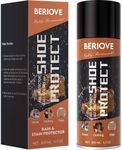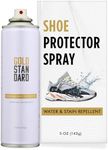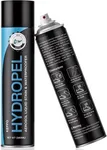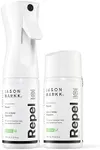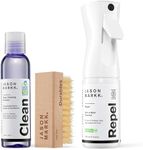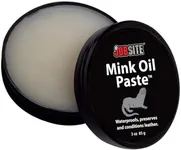Buying Guide for the Best Shoe Protection Spray
Choosing the right shoe protection spray can help extend the life of your footwear by protecting it from water, stains, and other elements. When selecting a shoe protection spray, it's important to consider the type of material your shoes are made of, the level of protection you need, and any additional features that might be beneficial. Understanding the key specifications of shoe protection sprays will help you make an informed decision and ensure your shoes remain in great condition for as long as possible.Material CompatibilityMaterial compatibility refers to the types of shoe materials the spray is designed to protect. This is important because using the wrong spray can damage your shoes or be ineffective. Sprays are often formulated for specific materials such as leather, suede, nubuck, fabric, or synthetic materials. To navigate this, check the label of the spray to ensure it matches the material of your shoes. If you have a variety of shoe types, you might want a versatile spray that works on multiple materials. Choose a spray that is specifically designed for the material of your shoes to ensure optimal protection and avoid any potential damage.
WaterproofingWaterproofing is the ability of the spray to repel water and keep your shoes dry. This is crucial for protecting your shoes from rain, snow, and puddles, which can cause damage and stains. Waterproofing sprays can vary in their effectiveness, with some providing light protection and others offering heavy-duty waterproofing. If you live in a rainy or snowy climate, or if you plan to wear your shoes in wet conditions, look for a spray with strong waterproofing capabilities. For occasional use or dry climates, a lighter waterproofing spray may suffice. Choose based on the typical weather conditions and how often your shoes will be exposed to moisture.
Stain ResistanceStain resistance refers to the spray's ability to prevent stains from setting into the material of your shoes. This is important for maintaining the appearance of your shoes and keeping them looking new. Stain resistance can vary, with some sprays offering protection against common stains like dirt and oil, while others provide more comprehensive protection against a wider range of substances. If you frequently wear your shoes in environments where they are likely to get dirty or stained, opt for a spray with high stain resistance. For less frequent use or cleaner environments, a basic level of stain resistance may be adequate. Consider your lifestyle and the typical conditions your shoes will face when choosing the level of stain resistance.
BreathabilityBreathability is the ability of the spray to allow air to pass through the material of your shoes, preventing them from becoming too hot or sweaty. This is important for comfort, especially if you wear your shoes for long periods or in warm conditions. Some sprays can create a barrier that reduces breathability, while others are designed to maintain it. If you prioritize comfort and wear your shoes for extended periods, look for a spray that advertises breathability. For occasional use or cooler climates, breathability may be less of a concern. Choose based on how often and in what conditions you wear your shoes.
Application MethodThe application method refers to how the spray is applied to your shoes. This is important for ease of use and ensuring even coverage. Common methods include aerosol sprays, pump sprays, and wipes. Aerosol sprays are easy to apply and provide even coverage, but they can be messy and require ventilation. Pump sprays offer more control and are often more environmentally friendly, but they may require more effort to apply evenly. Wipes are convenient for quick touch-ups but may not provide as thorough coverage. Consider your preference for ease of use and the level of coverage you need when choosing the application method.
Drying TimeDrying time is the amount of time it takes for the spray to dry and become effective. This is important for convenience and planning when you can wear your shoes again. Drying times can range from a few minutes to several hours. If you need to use your shoes quickly after application, look for a spray with a fast drying time. For less urgent use, a longer drying time may be acceptable. Choose based on how quickly you need your shoes to be ready for use after applying the spray.
